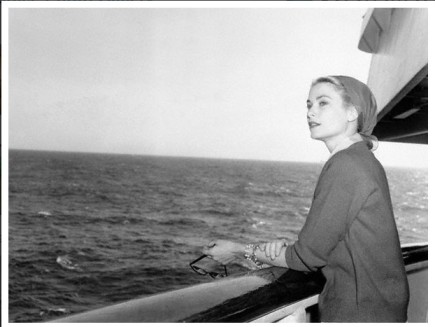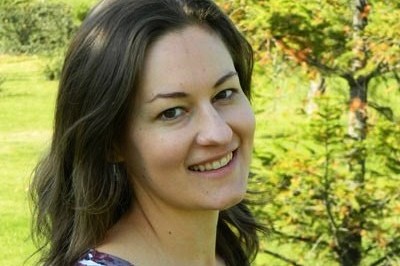Dominican Republic Resort Honors Beauty and Wildlife
According to the 2007 YPB&R/Yankelovich National Leisure Travel Monitor, naturalistic travel is the second most primary purpose for all leisure trips. It’s just as well that Roco Ki, the multi-billion dollar luxury resort and residential development underway on Macao Beach in the Punta Cana region of the Dominican Republic, is a natural paradise, making it a perfect real estate and travel choice for individuals with a love for the wild.
Roco Ki boasts an extremely lush, green landscape, home to exotic creatures and abundant plant life. Royal and coconut palm trees stretch out towards the sun, mangroves give shelter for diverse wildlife and the beaches extend long, and beautifully untouched along the coast.
It’s Easy Being Green
Roco Ki is true to its name, which means, “honoring the land” in the native language of the Taino Indians who once lived there. The community’s master plan is sensitive to the rich environment that inspired its creation. Indigenous trees including coconut palms, and plants such as sea grapes and the vibrant red firebush, have been carefully preserved in a nursery for replanting. Roco Ki’s impressive Nick Faldo-designed golf course is in the process of replanting approximately 500,000 native plants that were originally found on the site.
With a low-density design allowing for miles of inland waterways, preserved mangroves and wildlife sanctuaries, Roco Ki truly honors the land.
National Parks
The Dominican Republic has 16 national parks and numerous protected areas. Just a one-hour drive from Roco Ki, on the southeastern tip of the island, is the 267-square-mile Parque Nacional del Este. This coastal ecosystem is an important habitat for hundreds of species of birds, plants, fish and other marine animals.
As one of the Caribbean’s largest marine parks, Parque Nacional del Este is also a nursery for 112 bird species – eight of which are only found on Hispaniola – including the ashy-faced owl and the Hispaniolan lizard-cuckoo. Turtles use the shores for nesting grounds, while manatees, bottlenose dolphins and a vibrant coral reef system thrive just offshore.
A series of one million-year-old limestone terraces jut out to form the mainland section of the park, similarly to Roco Ki’s own cliff formations, but the principal attractions are the caves on the western side. More than 100 remarkable cave
systems beckon with whispers of the past. Taino pictographs and petroglyphs cover the cave walls, painting a picture of the pre-Columbian civilization’s culture and history.
For the Birds
Avid birdwatchers are sure to find fine-feathered friends at Roco Ki as the Dominican Republic is home to more than 250 species of birds. The national bird is the cotica parrot, native to the island of Hispaniola. The colorful broad-billed and narrow-billed tody, Hispaniolan lizard-cuckoo, palm chat, and Hispaniolan parrot are all endemic birds that soar in the skies above Roco Ki.
Traveling Giants
Just a few hours from Roco Ki, on the northeast coast, lies the Samana peninsula. Each year more than 10,000 humpback whales journey from the frigid waters of the Artic to the more tepid waters around Samana. The whales remain in the area from mid-January through mid-March to court and breed.
Roco Ki visitors can delight in viewing the whales as they swim by, right off the shore of Macao Beach or join one of several whale-watching excursions to witness these gentle giants of the sea as they playfully frolic – slapping flippers, leaping out of the water and splashing with their gargantuan tails as they submerge.
Dominican Flora and Fauna by the Numbers:
· 10,000 humpback whales migrate to the area annually for birthing season
· 5,600 species of plants flourish in the Dominican Republic
· 16 national parks showcase the country’s natural beauty
· 250 species of birds take to the skies above
· 10,417 feet tall is Pico Duarte, the Caribbean’s highest peak
· 78 degrees Fahrenheit is the average annual temperature of paradise
Roco Ki is a new luxury resort and residential development now underway in Punta Cana, Dominican Republic.
Phase I of the 2,700-acre destination resort opened in spring 2008. It includes beachfront residences and The Westin Roco Ki Beach & Golf Resort, featuring more than 300 lodging accommodations including condominiums and villas, an impressive conference facility, water sports center and full-service spa.
Also featured will be a Nick Faldo signature 18-hole, par-72 golf course managed by Troon Golf, a world-class marina, shopping areas, a botanical garden and a museum showcasing ancient artifacts and relics from the Taino Indians. For more information, visit www.rocoki.com.
Discover more from Tango Diva
Subscribe to get the latest posts sent to your email.





I heard about the Hispaniolian parrot from Nature conservancy, as a species which exists only in the Dominican Republic.
he North Coast of the Dominican Republic is the granddaddy of tourism for the island. Generations upon generations of travelers have come to Puerto Plata and the nearby areas of Sosúa and Cabarete to bask in their charm, beauty and ambience. Named the Amber Coast because of the abundance of the semi-precious gem in the region, this is the area where Christopher Columbus landed during his first voyage of discovery. And the discoveries continue to this day. Every year, visitors come to taste the delicious Brugal rum right from its factory here, fly through the sky on a kiteboard in Cabarete, soak up the culture with a stroll through the Victorian architecture of Puerto Plata or hit the links in the mega-resort complex of Playa Dorada. Here, all of the delights of the island meet amid lush jungle forests, soaring mountains, gold sand beaches and breathtaking blue waters. With one foot in the past and one foot firmly in the future, Puerto Plata and its neighboring destinations continues to be a major attraction for the island.
Yeah Caberete is a fantastic place to go. That said the whole country is awesome!